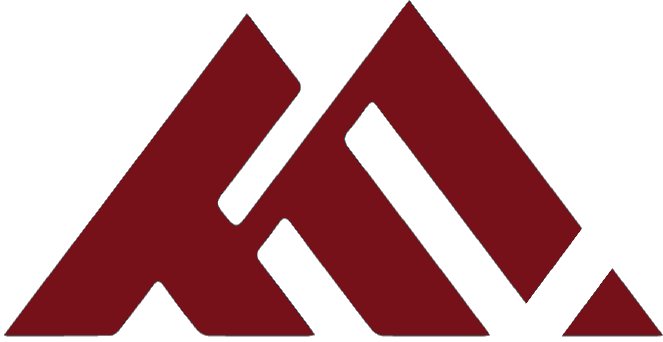I often write about the difference between regular content marketing and thought leadership marketing.
While regular content creators focus on writing generic SEO-friendly content, thought leaders seek to make an impact with deep, practical, original content.
But how do you create such content? Do you have to spend a lot of time researching and thinking about unique angles? Do you always have to chase controversial topics and be a contrarian to write a thought leadership piece?
Not really.
The truth is that it is much easier than it seems if you have the right foundation.
And that foundation is a thought leadership framework.
What is a thought leadership framework?
Author and thought leadership consultant, Denise Brosseau, advises aspiring thought leaders to codify their lessons learned and create intellectual property to differentiate themselves as thought leaders and create momentum for their ideas.
“Every year millions of thought leaders with amazing ideas successfully create bold initiatives, programs, and products, and many gain a successful following for those ideas,” she writes. “But to build momentum for new ways of thinking, to reframe an industry or pioneer sustained evolutionary or revolutionary change, you need to document what you know into a system, methodology, process, protocol, or set of guiding principles so others can easily understand, get on board, and help you replicate your ideas.”
Brosseau suggests five steps to create intellectual property out of your framework:
1. Create a simple, preferably visual, representation that is easy to understand.
2. Clearly document how to use that framework.
3. Give it a great name.
4. Show proof that it works.
5. Protect and control its use.
Creating your own thought leadership framework
I’ve developed a straightforward plan for developing your thought leadership framework, called FRAME.
FRAME stands for:
Find
Research
Analyze
Map
Explain
FIND
Find that idea or process you already use or want to develop and refine into a repeatable system.
RESEARCH
Research existing frameworks or methods used in your industry that are used to solve the problem your clients have.
ANALYZE
Analyze the results of your research and come up with a unique angle, either combining different existing frameworks or innovating from your own experience.
MAP
Map your new framework visually (on a board, paper, or software like Miro) to gain insights on the steps to follow.
EXPLAIN
Explain your framework, now writing down every step in detail so anyone would understand it.
Here are some practical exercises to help you create your framework.
Option 1: Pick a problem you already solved.
- Is this something you do on a daily/weekly/monthly basis? → Then create a process map.
- Is this something you did once to grow your business or obtain a particular result and it worked? → Then reverse engineer the process starting with the final outcome and listing each step of what needed to happen before.
- Is this something you already teach to others? → Then explain it to someone who has zero background or inside knowledge of your industry, with such detail and simple language that they can explain it back to you. Make notes of the gaps where you need to explain more.
Option 2: Explore new ways to solve a problem for your client
To start, read 3 to 5 books on the subject. Then interview practitioners in your field and ask them to describe their process or framework. After the interviews, compare notes, looking for patterns and differences.
Once that’s done, here are the next steps:
- Come up with 5 to 7 steps (no more than 10) from your process and those of others.
- Draw a mind map or flowchart of your system.
- Come up with a name for the framework and for each step.
- Share it with some people in your niche or post on social media and gather reactions and feedback.
Once you have a framework, content creation is much easier. All you have to do is develop the ideas within the framework into articles, videos, posts, and the like.
Let me show you how I do it.
Thought Leadership Content Creation Process
Your framework should have an edge, a unique angle (perhaps even a bit controversial) that will differentiate you from everybody else. Otherwise, your content won’t stand out.
Thus, your framework will allow you to come up with disruptive ideas, that is, ideas that shake your readers’ paradigms and challenge them to change their belief systems.
Ask yourself:
- What is an “old way” of thinking that your clients have that they must change for a better “new way”?
- What mistakes are your clients making that are perpetuating their problems?
- What principles for success do your clients need to adopt in order to get the outcomes they’re looking for?
For instance, when I answered those three questions, I was able to write three headlines for articles that I published on Medium.
- Disruptive headline: “Content Marketing is Dying — Here’s why you need to develop thought leadership instead”
- Mistakes headline:: “3 Mistakes Solopreneurs Make When Positioning Themselves”
Principles headline: “Write Like a Thought Leader — Four principles for writing a blog post that makes an impact” - But publishing your thought leadership content as a blog post is not enough.
That’s why I created a Content Cadence.
The goal of the content cadence is to set up the Perfect Repeatable Week. That means, a set of activities that will allow you to do the same things week over week but that will bring results.
The cadence consists of one main piece of content which is then repurposed into several pieces.
The main piece of content can be a long blog article, a podcast episode, the recording of a live event, or some other type of video.
The blog post can be repurposed into shorter pieces of text to be shared on social media. The podcast and the videos can be cut into short clips (by topics) and also shared on social media.
For example, here’s a cadence I follow:
I write a weekly blog article for Medium and then repurpose it into:
- 2 or 3 newsletter issues
- 5 LinkedIn posts
- 5 tweets
Of course, the content shouldn’t be about random topics, but only those I’m building thought leadership around. In my case, they are Thought Leadership, Book writing, Writing and IP creation, and Solopreneurship.
And since my writing is part of my business, I make sure that each article mentions one or more of my products (and links to them). For example, an article or posts might mention my book (The Solo Thought Leader), the Thought leadership Scorecard, or my online course.
Ready to do the same? Try this:
- Start by writing the long piece (900 + words)
- Then repurpose the long piece into several LinkedIn posts or Tweets.
- Publish a shorter version of the article as an email sent to your list.
- Include CTAs to your products or services.
Writing like a thought leader doesn’t mean creating pure and original pieces for each platform or medium. On the contrary, it means writing great pieces once and distributing them widely.
Your ideas should spread like wildfire, but don’t wait for it to happen by accident.
You must be purposeful about amplifying your writing. And a great way to do that is with a content cadence.

